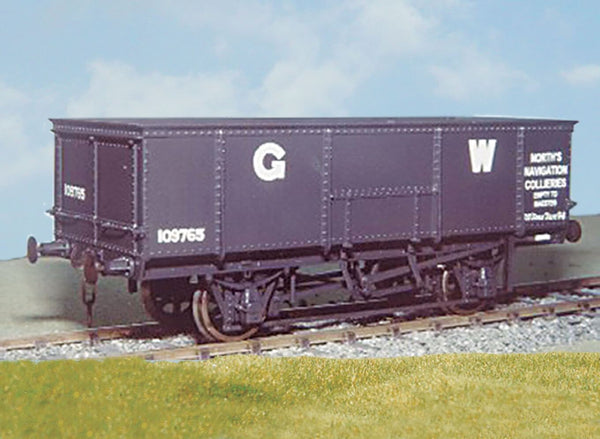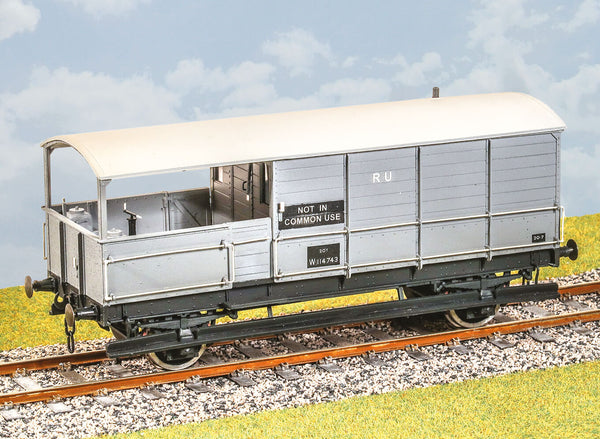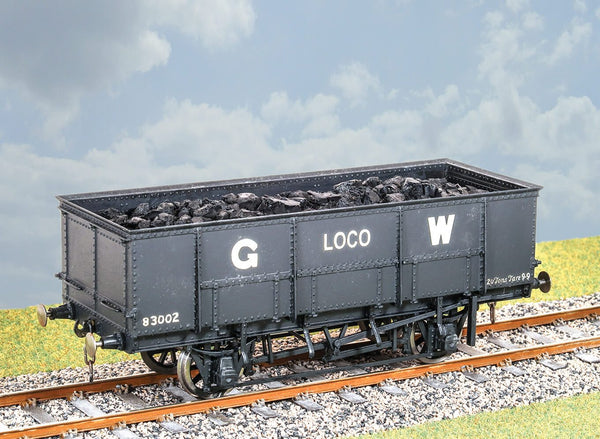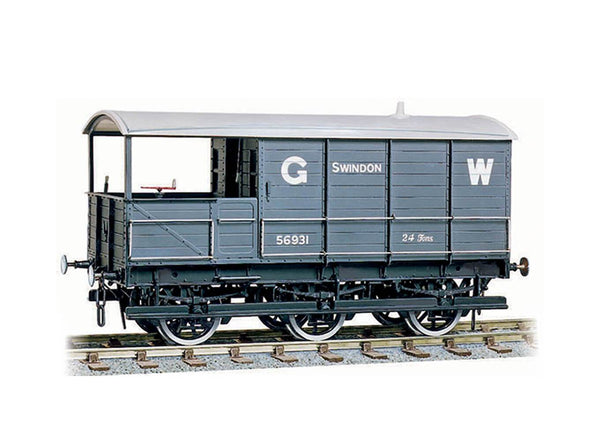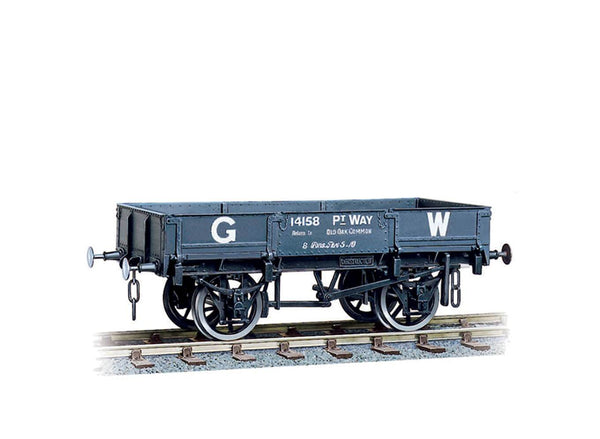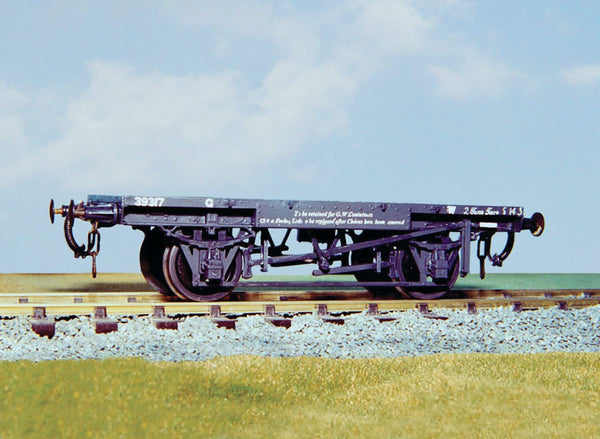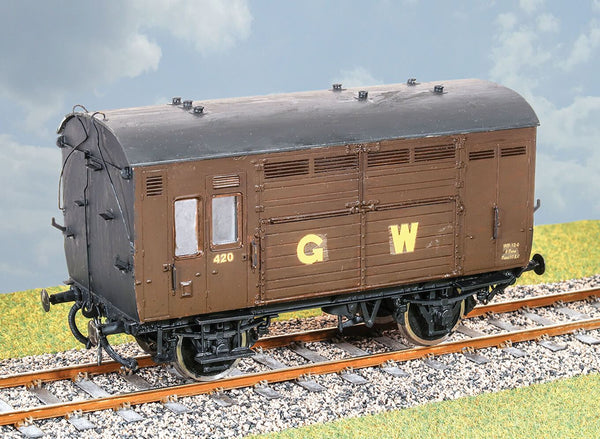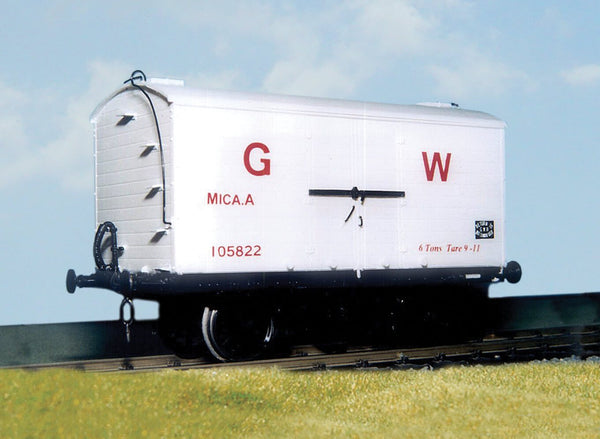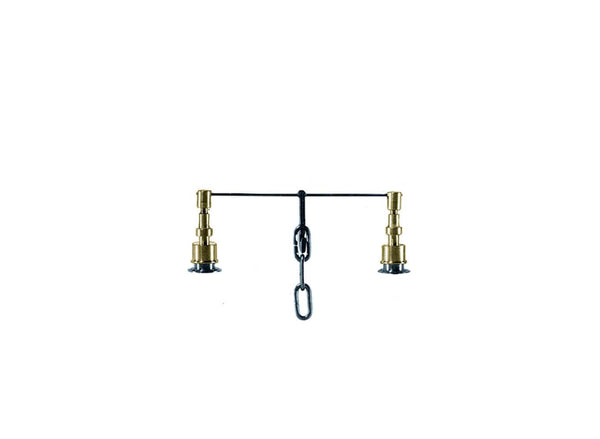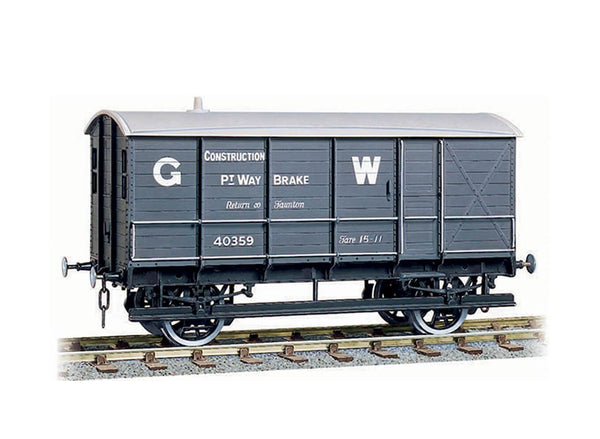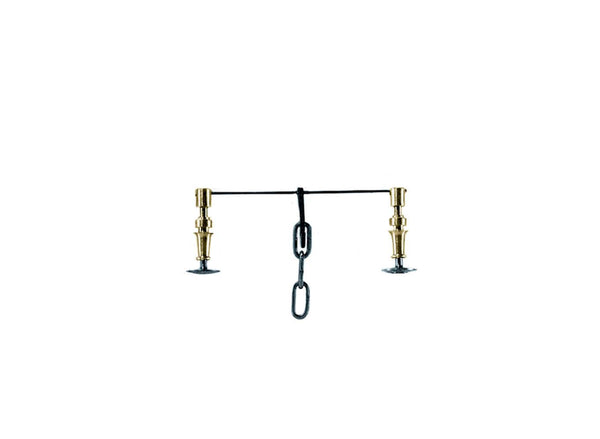BROWSE PECO PRODUCTS
Browse through our complete product portfolio.
148 Products Found
GWR 20ton Felix Pole Coal Wagon
Almost 1,000 of these high capacity wagons were built in the 1920s for Welsh coal traffic. Rerated to a 21-ton capacity wagon during the Second World War, they were in traffic until the 1960s. Transfers for GWR and BR, and for Norths Navigation Collieries. These finely moulded plastic wagon kits come complete with pin point axle wheels and bearings, 3 link couplings and transfers. This kit is supplied with pre-coloured moulded parts although painting can improve the appearance. Additional parts to enable the vehicle to be modelled incorporating modifications made to the prototypes during their working life are included where appropriate.
GWR 20ton Goods Brake Van
221 of these vans were built between 1927 and 1931. Seen all over the GWR, and later BR Western Region. Examples lasted until the 1960s. Transfers for GWR and BR. These finely moulded plastic wagon kits come complete with pin point axle wheels and bearings, 3 link couplings and transfers. This kit is supplied with pre-coloured moulded parts although painting can improve the appearance. Additional parts to enable the vehicle to be modelled incorporating modifications made to the prototypes during their working life are included where appropriate.
GWR 20ton Loco Coal Wagon
Converted from the “Felix Pole” wagons (PS41), 200 were so treated in 1934-35, to convey coal to GWR locomotive sheds. Featuring extra side doors, they joined the general coal fleet in the 1950s. Transfers for GWR and BR. These finely moulded plastic wagon kits come complete with pin point axle wheels and bearings, 3 link couplings and transfers. This kit is supplied with pre-coloured moulded parts although painting can improve the appearance. Additional parts to enable the vehicle to be modelled incorporating modifications made to the prototypes during their working life are included where appropriate.
GWR 24ton Six-wheel Brake Van
On heavy unfitted coal trains form the Welsh Valleys to London, 6 wheels and 8 tons of extra weight were required to produce sufficient braking force to keep the train under control. Easy to assemble from the correctly coloured injection moulded components (no painting necessary). Kits include Transfers. Buffers are sprung and 3-link couplings are included on all models, while the BR wagons also feature working axlebox springs and moveable brake levers. Fine scale metal tyred wheels on pin-point axles supplied, spoked for the GWR wagons or 3-hole disc for the BR types. Fully illustrated instructions included.
GWR 8ton Steel Permanent Way Wagon
These rugged wagons were used on track maintenance trains together with the Permanent Way Brake Van (W602). Kit features 4 working side-drop doors. Easy to assemble from the correctly coloured injection moulded components (no painting necessary). Kits include Transfers. Buffers are sprung and 3-link couplings are included on all models, while the BR wagons also feature working axlebox springs and moveable brake levers. Fine scale metal tyred wheels on pin-point axles supplied, spoked for the GWR wagons or 3-hole disc for the BR types. Fully illustrated instructions included.
GWR Container Wagon
Standard GWR container (CONFLAT) wagon, as used in kit PS39, but without the container. Transfers for GWR and BR. These finely moulded plastic wagon kits come complete with pin point axle wheels and bearings, 3 link couplings and transfers. This kit is supplied with pre-coloured moulded parts although painting can improve the appearance. Additional parts to enable the vehicle to be modelled incorporating modifications made to the prototypes during their working life are included where appropriate.
GWR Container Wagon with 'B' Cont.
This was the standard GWR container wagon (CONFLAT) from 1933 to 1939. Examples lasted into the 1970s. The container supplied with this kit was of a type used to convey bicycles, and is also available separately (PS74). Wagon and container transfers for GWR and BR. These finely moulded plastic wagon kits come complete with pin point axle wheels and bearings, 3 link couplings and transfers. This kit is supplied with pre-coloured moulded parts although painting can improve the appearance.. Additional parts to enable the vehicle to be modelled incorporating modifications made to the prototypes during their working life are included where appropriate.
GWR Horse Box Wagon
300 of these vehicles were built in the 1920s, lasting into the 1950s and 60s. They were used to carry horses to racecourses and stables, often marshalled into passenger and parcels trains. Transfers for GWR and BR. These finely moulded plastic wagon kits come complete with pin point axle wheels and bearings, 3 link couplings and transfers. This kit is supplied with pre-coloured moulded parts although painting can improve the appearance. Additional parts to enable the vehicle to be modelled incorporating modifications made to the prototypes during their working life are included where appropriate.
GWR Mica Insulated Van
In 1929, 54 of these vans were built to carry meat in chilled conditions. The hoppers inside were filled with “Drikeld” solid carbon dioxide through characteristic roof vents. They lasted into the 1960s, some being converted into “TEVAN” vans (PS48). Transfers for GWR and BR. These finely moulded plastic wagon kits come complete with pin point axle wheels and bearings, 3 link couplings and transfers. This kit is supplied with pre-coloured moulded parts although painting can improve the appearance. Additional parts to enable the vehicle to be modelled incorporating modifications made to the prototypes during their working life are included where appropriate.
GWR Parallel Shank Buffers
0 Gauge Chassis kits and Accessories for scratchbuilders and kit modification. This pack contains sufficient components to assemble four buffers and two 3- link couplings. Three-link chain couplings, with no means of drawing the wagons together, were used to form the peculiarly British "loose coupled" freight train: since such trains were not fitted with an automatic through-train braking system there were no pipes to connect between the vehicles. Control of the train was assisted by the guard's van at the rear of the train, or in certain cases a series of vans spaced along the train, which were used to keep the couplings taut and therefore also helped prevent snapped couplings. Such trains travelled at low speeds and were finally phased out in the 1970s.
GWR Permanent Way Brake Van
The GWR built these special brake vans between 1890 and 1900, for use on track maintenance trains. They have end windows instead of the usuall verandah. Easy to assemble from the correctly coloured injection moulded components (no painting necessary). Kits include Transfers. Buffers are sprung and 3-link couplings are included on all models, while the BR wagons also feature working axlebox springs and moveable brake levers. Fine scale metal tyred wheels on pin-point axles supplied, spoked for the GWR wagons or 3-hole disc for the BR types. Fully illustrated instructions included.
GWR Tapered Shank Buffers
0 Gauge Chassis kits and Accessories for scratchbuilders and kit modification. This pack contains sufficient components to assemble four buffers and two 3- link couplings. Three-link chain couplings, with no means of drawing the wagons together, were used to form the peculiarly British "loose coupled" freight train: since such trains were not fitted with an automatic through-train braking system there were no pipes to connect between the vehicles. Control of the train was assisted by the guard's van at the rear of the train, or in certain cases a series of vans spaced along the train, which kept the couplings taut and therefore also helped prevent snapped couplings. Such trains travelled at low speeds and were finally phased out in the 1970s.










